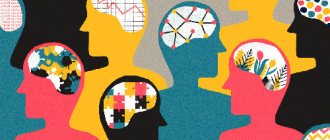Mental health is an integral part and essential component of health. The WHO Constitution states: “Health is a state of complete physical, mental and social well-being and not merely the absence of disease or infirmity.” An important implication of this definition is that mental health is not only the absence of mental disorders and disabilities.
Mental health is a state of well-being in which a person realizes his or her abilities, can cope with the normal stresses of life, work productively, and contribute to their community. In this positive sense, mental health is fundamental to individual well-being and the effective functioning of communities.
Mental health is essential to our collective and individual ability as sentient beings to think, express emotions, communicate with each other, earn a living and enjoy life. Given this fact, promoting, protecting and restoring mental health can be seen as vital action by individuals, communities and communities around the world.
Determinants of mental health
The level of mental health of a person at any given time is determined by numerous social, psychological and biological factors. For example, violence and persistent socio-economic pressure are recognized as risk factors for mental health. The clear evidence relates to sexual violence.
Poor mental health is also associated with rapid social change, stressful work conditions, gender discrimination, social exclusion, unhealthy lifestyles, physical ill health, and human rights violations.
There are also specific psychological and personality factors that make people vulnerable to mental health problems. Biological risks include genetic factors.
Parenting styles
Many experts are convinced that the psychological indicators of a preschooler’s health reflect the parenting style chosen by the parents and the type of relationships established in the family.
The controlling parenting style is based on assigning to parents the function of controlling children's behavior. Restrictions on any type of activity are accompanied by an explanation of the essence of the prohibition. Children brought up in such conditions listen to the words of adults. They are not prone to aggression and decisiveness.
A distinctive feature of the democratic style is the high level of perception of the child. Adults do not experience problems with verbal communication with the baby. Parents and relatives perceive the baby as an independent unit, demonstrating at the same time their readiness to provide help at the right time. Children perceived from this position easily find a common language with their peers. They do not allow themselves to be manipulated, which does not prevent them from attempting to establish control over other preschoolers. As a rule, such babies are well developed physically. In some situations they can become aggressive.
A mixed parenting style develops a tendency towards obedience in children. Their imagination is at a low level. Curiosity and aggression are not typical for such kids. At the same time, preschoolers can be called emotionally sensitive.
Promoting and protecting mental health
Mental health promotion includes activities that promote psychological health. These may include creating an environment that supports mental health.
An environment in which fundamental civil, political, socio-economic and cultural rights are respected and protected is the foundation of mental health. Without the security and freedom provided by these rights, maintaining a high level of mental health is difficult.
National mental health policies should focus on mental disorders and broader aspects that promote mental health. Mental health promotion needs to be integrated into policies and programmes. In addition to the health sector, sectors such as education, employment, justice, transport, environment, housing and social welfare need to be involved in addressing these issues.
Specific ways to promote mental health include:
- early childhood interventions (for example, creating a stable environment that meets children's health and nutritional needs, provides protection from hazards, and opportunities for early learning and interaction with others in a responsive, emotionally supportive, and developmentally stimulating manner);
- child support (eg skills programmes, child and young people development programmes);
- providing socio-economic opportunities to women (for example, improving access to education and microcredit schemes);
- social support for older people (eg matchmaking initiative, local day centers for older people);
- programs targeting vulnerable people, including minorities, indigenous peoples, migrants and people affected by conflict and natural disasters (for example, psychosocial interventions after natural disasters);
- interventions to promote mental health in schools (eg programs supporting environmental change in schools);
- interventions to promote mental health in the workplace (eg stress prevention programmes);
- housing policies (eg improving housing conditions);
- violence prevention programs (for example, limiting access to alcohol and weapons);
- community development programs (e.g., Communities that Care initiatives, integrated rural development);
- poverty reduction and social protection of the poor;
- anti-discrimination laws and campaigns;
- Strengthening the empowerment and care of people with mental disorders.
Ability to cope with negativity
Our psyche is structured in such a way that dangers and negative phenomena attract our attention more strongly than joyful and pleasant events. This was justified in a world full of dangers, and helped our ancestors survive.
Nevertheless, properly functioning defense mechanisms of a healthy psyche help to switch attention from unpleasant thoughts to joyful ones. For example, humor is one of the most powerful protective tools. Thanks to it, you can redirect accumulated negative emotions into a more positive and constructive direction.
Mindfulness practice and meditation may also be helpful. These techniques allow us to look differently at situations that spoil our mood, and understand that in fact everything is not so bad.
Mental health care and treatment
In the context of national efforts to develop and implement mental health policies, it is critical not only to protect and promote the mental well-being of citizens, but also to address the needs of persons with specific mental disorders.
Over the past decade, understanding of what needs to be done to address the growing burden of mental disorders has improved significantly. There is growing evidence that key interventions for priority mental disorders are effective and cost-effective in countries at different levels of economic development. Examples of such actions that are cost effective, feasible and affordable include:
- treating depression with psychotherapy and, in cases of moderate or severe depression, antidepressants;
- treatment of psychosis with antipsychotic drugs in combination with psychosocial support;
- taxation of alcoholic beverages and restrictions on their sale and advertising.
In addition, there are a number of effective interventions for suicide prevention, prevention and treatment of mental disorders in children, prevention and treatment of dementia, and treatment of substance use disorders. The WHO Mental Health Gap Action Program (mhGAP) has developed evidence-based guidelines for lay people to identify and manage a range of priority mental health disorders.
Positive thinking
Any situation in life can be assessed differently: someone is critical of everything and notices shortcomings even in the most pleasant event, while someone, on the contrary, tries to paint what is happening in cheerful colors and finds positivity in the most difficult situation. The ability to easily and humorously experience all the problems that arise will help you maintain your mental health and protect you from the negative effects of stress and anxiety. You will learn to look for positive moments in any situation, treat what happened as a life lesson, and not as a mistake or bad luck, extract experience and new opportunities from what is happening, and not become discouraged and depressed when obstacles and difficulties arise.
An excellent example of a positive thinking person is the famous philosopher Socrates, who treated any situation with humor. It is known that his wife Xanthippe was a terribly grumpy woman, and one day, in a fit of anger, she threw hot water in Socrates’ face, after which he was left with a scar. Later, one of the philosopher’s students, knowing about the problems in the sage’s personal life, asked him a question about whether he should get married. The scientist, without thinking for a minute, answered unequivocally: “It’s worth it.” If you are lucky, you will be happy, and if not, you will become a philosopher.”
Here are some helpful tips on how to think positively:
- Avoid negative influences. Learn to say “no” to what you don’t like and what makes you uncomfortable. Surround yourself with positive people.
- Look at things from different angles. Learn to extract useful experience from any situation and see bright moments in everything.
- Smile more often. Remember that even smiling for no reason will definitely lift your spirits.
- Make time. Do what makes you happy and gives you pleasure. Walking, shopping, reading, watching a movie will help maintain a positive mood.
- Find something that motivates you and lifts your spirits. For example, a good quote that you can print out and put in your wallet, or a favorite song that, listening to it, will help you move through life more cheerfully and easily.
- Set goals and achieve them. Start small, gradually switching to larger ones. This will make your life interesting and meaningful.
- Don't be afraid of failure. As F.D. Roosevelt said: “The only thing to fear is fear itself.”
- Do not give up. Persistence certainly contributes to achieving positive results.
Of course, it is impossible to collect in one lesson all the principles and techniques for maintaining a healthy mental state of a person, so we advise you to pay attention to the section of our blog dedicated to psychology, where you will find a lot of useful and interesting things, as well as to the “Human Health” program, where we consider a variety of issues, including mental health.
WHO activities
WHO supports governments in their efforts to improve mental health. WHO analyzes evidence on promoting mental health and works with governments to disseminate this information and incorporate effective strategies into policies and plans.
In 2013, the World Health Assembly approved the Comprehensive Action Plan for Mental Health for the period 2013–2020. The plan reflects the commitment of all WHO Member States to take concrete action to improve mental health and contribute to achieving global goals.
The overarching goals of the Action Plan are to promote mental well-being, prevent mental disorders, provide health care, promote recovery, strengthen human rights and reduce mortality, morbidity and disability of people with mental disorders. This plan aims to achieve 4 objectives:
- strengthen effective leadership and governance in mental health;
- provide comprehensive, integrated and responsive health and social care at the primary level;
- implement mental health promotion and mental health prevention strategies; And
- Strengthen mental health information systems, evidence and research.
The action plan places particular emphasis on the protection and promotion of human rights, the strengthening and empowerment of civil society, and the centrality of health care at primary level.
To achieve the plan's objectives, the Action Plan proposes and requires controversial actions on the part of governments, international partners and WHO. Ministries of health will need to take leadership, and WHO will work with them and international and national partners, including civil society, to implement the plan. Since there is no one-size-fits-all action, each country's government will have to tailor the Action Plan to its specific national circumstances.
Coping strategies test
Stress is most often viewed by many people from the negative side. But you must understand that stress is a natural reaction of the body, which helps it mobilize all its strength in a short period of time.
Stress is sometimes considered beneficial, because it activates brain activity, stimulates success, and makes a person more mentally stable [Health, 2018]. In addition, you have probably heard that a person develops when he leaves his comfort zone. This is a kind of stressful state. And existentialists believe that a person reveals himself precisely in borderline situations.
But despite all the beneficial properties of stress, it is very important to be able to not let it drain you. To do this, there are various ways to cope with stress, which in psychotherapy are called coping strategies (from the English “cope” - cope, withstand, cope).
A coping strategy is an adaptive form of behavior that maintains psychological balance in a problematic situation; these are methods developed consciously and aimed at overcoming a stressful situation.
To get acquainted with the types of coping strategies, we suggest you take a short test. It was created on the basis of the methodological development of scientists R. Lazarus and S. Folkman in 1980 - the Ways of Coping Checklist (WCC) questionnaire. The test is designed to determine ways to overcome difficulties in various areas: difficulties in work, difficulties in learning, difficulties in communication, difficulties in love, etc. Within the framework of this concept, overcoming difficulties is possible with the help of 8 strategies (behavior styles), which you will learn about after the test.
To correctly interpret the answers, you should follow several rules when taking the test:
- Based on the statements described, evaluate how often these types of behavior manifest themselves in you in difficult life situations.
- Answer as honestly as possible, only what is true for you, do not try to impress others.
- The test data will be recorded after you answer the last question and see confirmation of the end of the test. If you finish the test before the last question and close the page, the data will not be saved.
- The test can be taken any number of times, but remember that only the last one is saved. If you have already taken this test, a sign will appear in the left menu.
To complete the test, click “Next”.
Statistics Full screen
Now let's look at a few more important questions.










